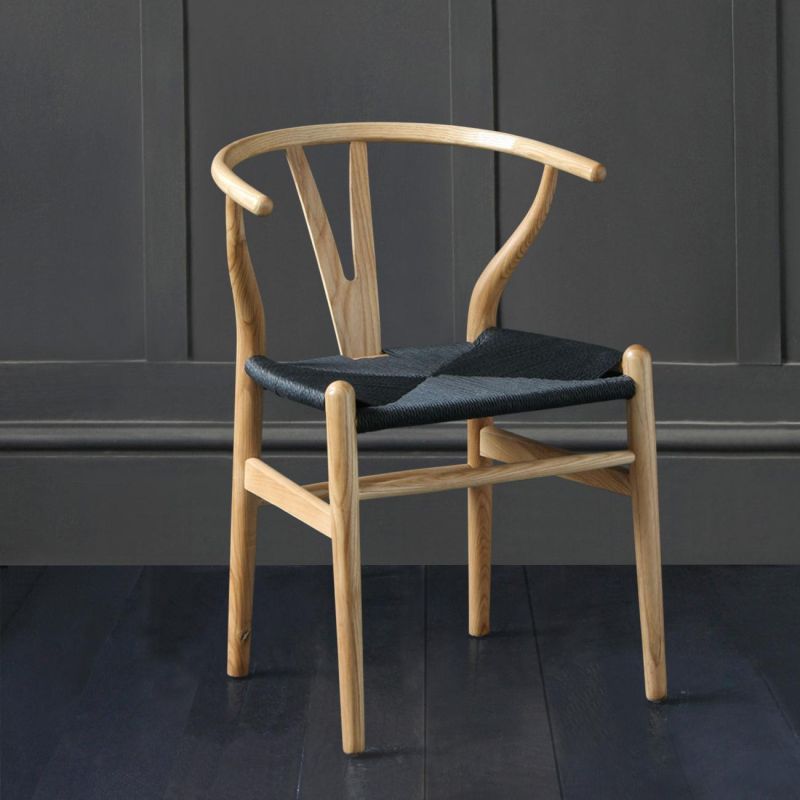Designer Details: A Brief History of Hans J. Wegner
Over the next few weeks and months, we’re excitedly introducing a brand-new category of blog content that explores the life and times of some of the world’s most famous furniture designers (the products of which we proudly feature on the WSG website.).
This week, we’re kicking things off with a bang. The brainchild of the Wishbone Dining Chair, bar stool, the iconic PP68 armchair and so much more, Hans Wegner is a name synonymous with Scandinavian furniture. His creations have become timeless classics, filling our kitchens, lounges, restaurants and bars with beautifully handcrafted mid-century wooden chairs and stools.
But what inspired this great Dane to make his mark inside the vast designers’ hall of fame? Let’s take a look into the life and times of the often titled ‘King of Chairs’ - one of Scandinavia’s most beloved and influential design masterminds.
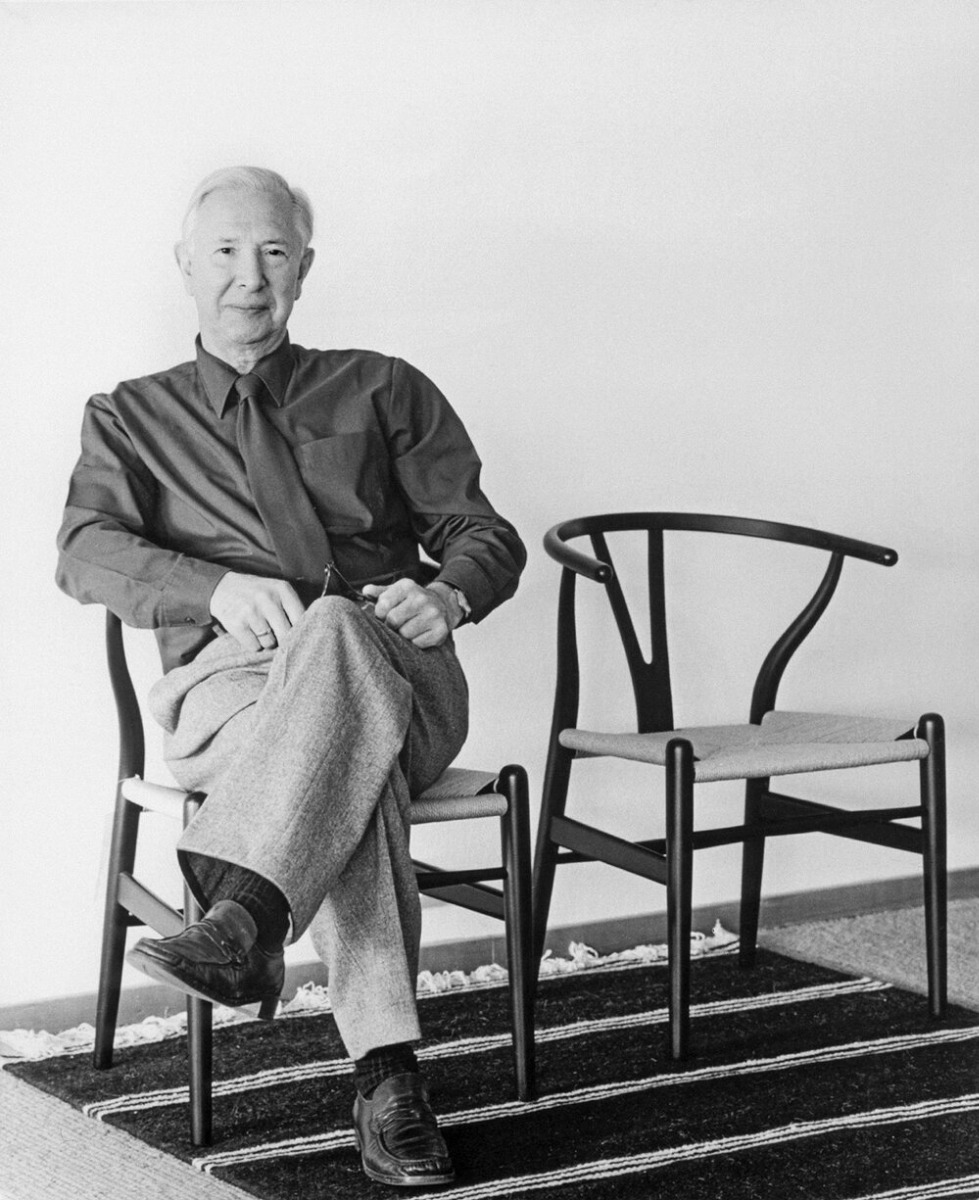
Credit – hgallery.com
Early Life
Born on 2nd April 1914 in Tonder, Denmark, Hans Jorgensen Wegner was raised by shoe cobblers Peter Wegner and Nicoline Lausen, showing an aptitude for handcraftsmanship at a very early age. He could even draw and create paper cuttings before learning to walk – talk about getting your priorities right!
By the time he was 14, young Hans had begun work as a child apprentice under the wing of legendary cabinetmaker H. F. Stahlberg, creating his first chair just a year later.
At the age of 17, just after joining the army, he was inspired by his first visit to a grand furniture exhibition – the Copenhagen Cabinetmakers Guild in 1935. The show had several experimental furniture designs from master craftsmen, including Johannes Hansen and Niels Vodder. These exhibits gave Hans the inspiration to become a furniture designer and set up his own business, creating and selling his own work.
The Copenhagen Cabinetmakers Guild (an exhibit from the 1933 edition is seen below) lasted until 1966 and played a massive part in the emergence of the Danish Modern art movement over the 20th century.
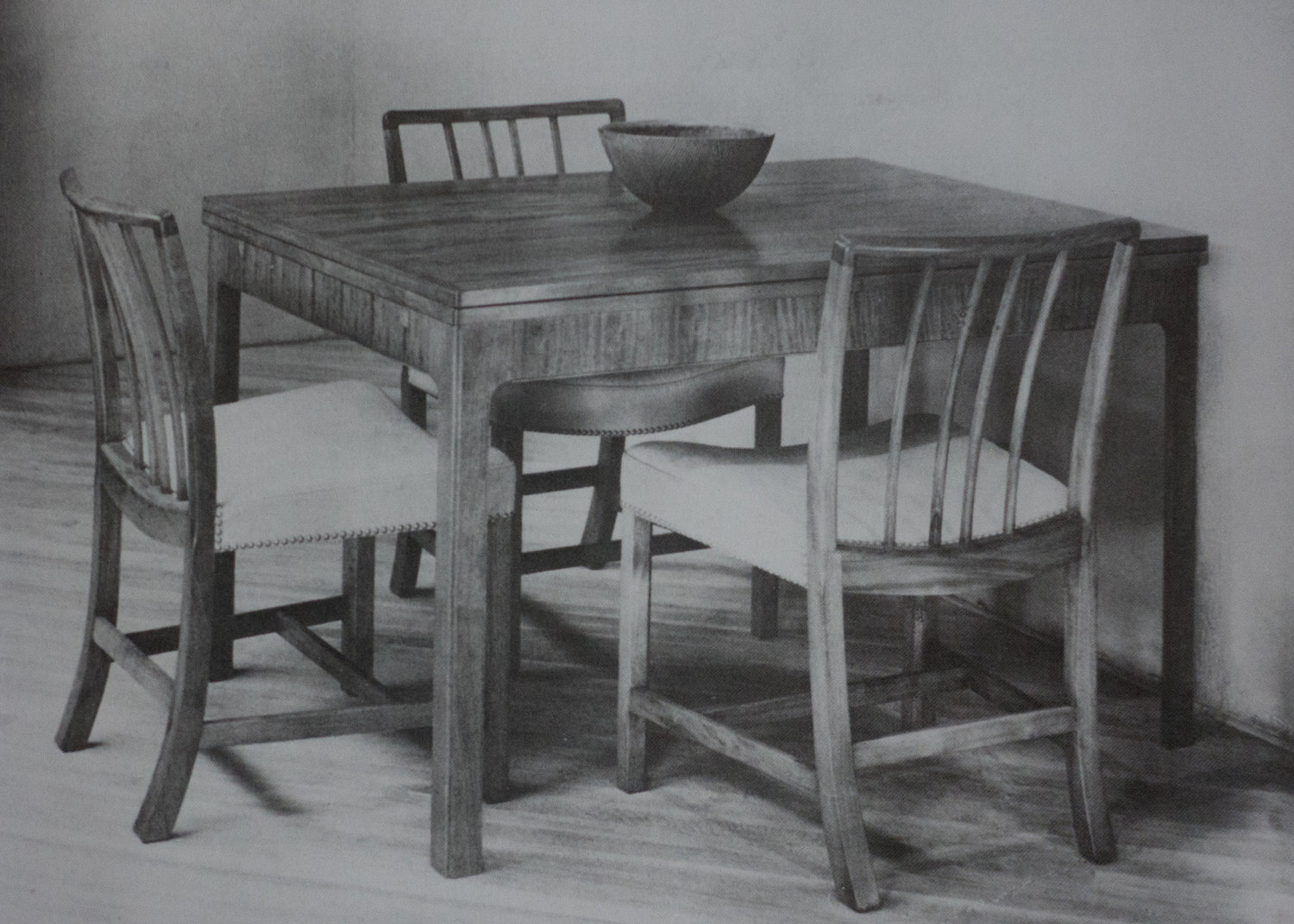
Credit – danishdesignreview.com
Career
By 1938, Hans was beginning to create furniture for the Aarhus City Hall (Aarhus is the second-largest city in Denmark), but this was delayed due to the outbreak of the Second World War. Nevertheless, he was responsible for all the furnishings inside the hall and created three striking lines of modular office furniture.
He married Inga Helbo in 1940 and opened his own studio in Aarhus in 1943. He designed the Peter’s Chair the following year, known as the CH410 (see below). This was a children’s chair that consisted of four pieces that fit together like a 3D jigsaw puzzle. 1943 was also the same year that Ikea was founded – flat-pack furniture was definitely the latest craze! The CH410 is still produced today, under Carl Hansen & Son.
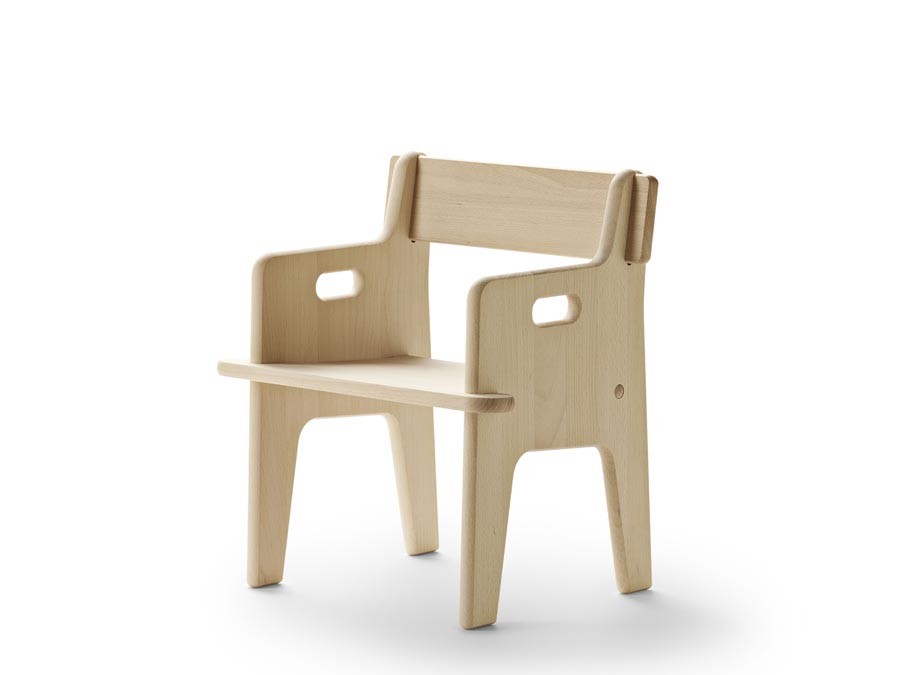
Credit – galerie-mobler.com
After the war, Hans travelled to Copenhagen to become a teacher at the Danish School of Arts and Crafts, and began working with moulded plywood by 1948. It was clear that he was starting to perfect his craft, and it wouldn’t be long before he turned his hand to his most famous chair of all.
1949 was a hallmark year for Hans. First producing the Round Chair (PP501), this was a collaboration between himself and another famous furniture maker, Johannes Hansen, and the chair came with either an upholstered or distinctively woven caned seat. Remarkably, this still produced design took Hans only 48 hours to handcraft.
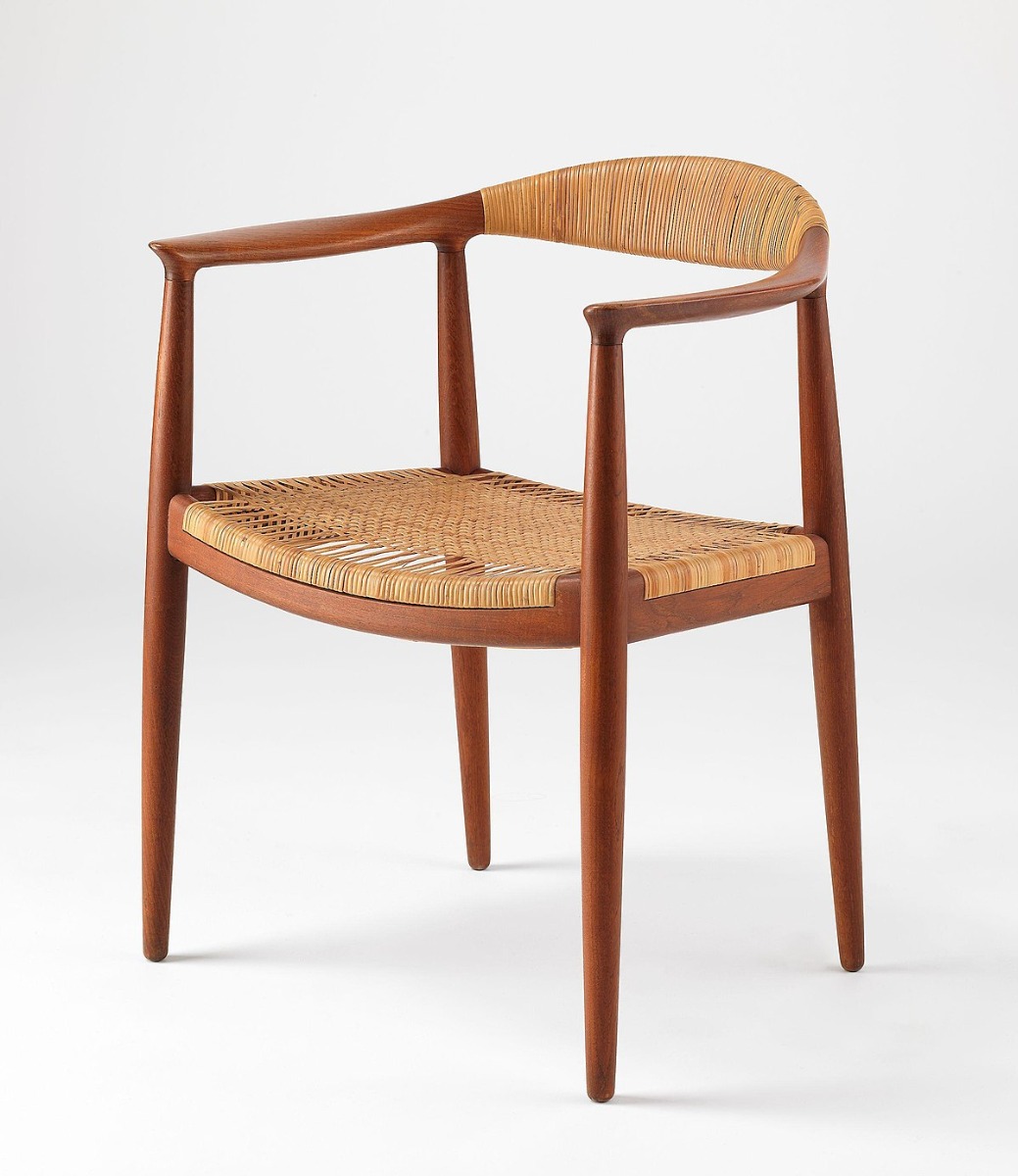
Credit - Wikipedia
The Round Chair became an icon of the mid-century trend and was even used by both John F. Kennedy and Richard Nixon during the first 1960 U.S. Presidential debate. Talk about a lasting legacy!
This chair was not created with mass production in mind and therefore was not simple to construct. As such, early orders were tricky to fulfil as their popularity soared. However, it has gone down in history as an iconic example of the ‘Danish Modern’ style and is a favourite of Scandi furniture lovers and history buffs alike.
The Wishbone Chair
That same year, in 1949, Hans created his legacy – the Wishbone Chair, otherwise known as the CH24.
Quite possibly the most famous example of Danish furniture design, the Wishbone was created with mass-production in mind, but this never came at the cost of its ground-breaking, innovative aesthetics.
“The Wishbone Chair is an understated work of simplicity and comfort, its graceful shape hinting at both East Asian design and modernist ideals” - David Colman, The New York Times, 6th February 2007
Hans’s best-selling design, the CH24, has been in continuous production ever since its release, 72 years ago. As a result, its global popularity has reached a fever pitch in Japan, the country accounting for over a quarter of its yearly production numbers.
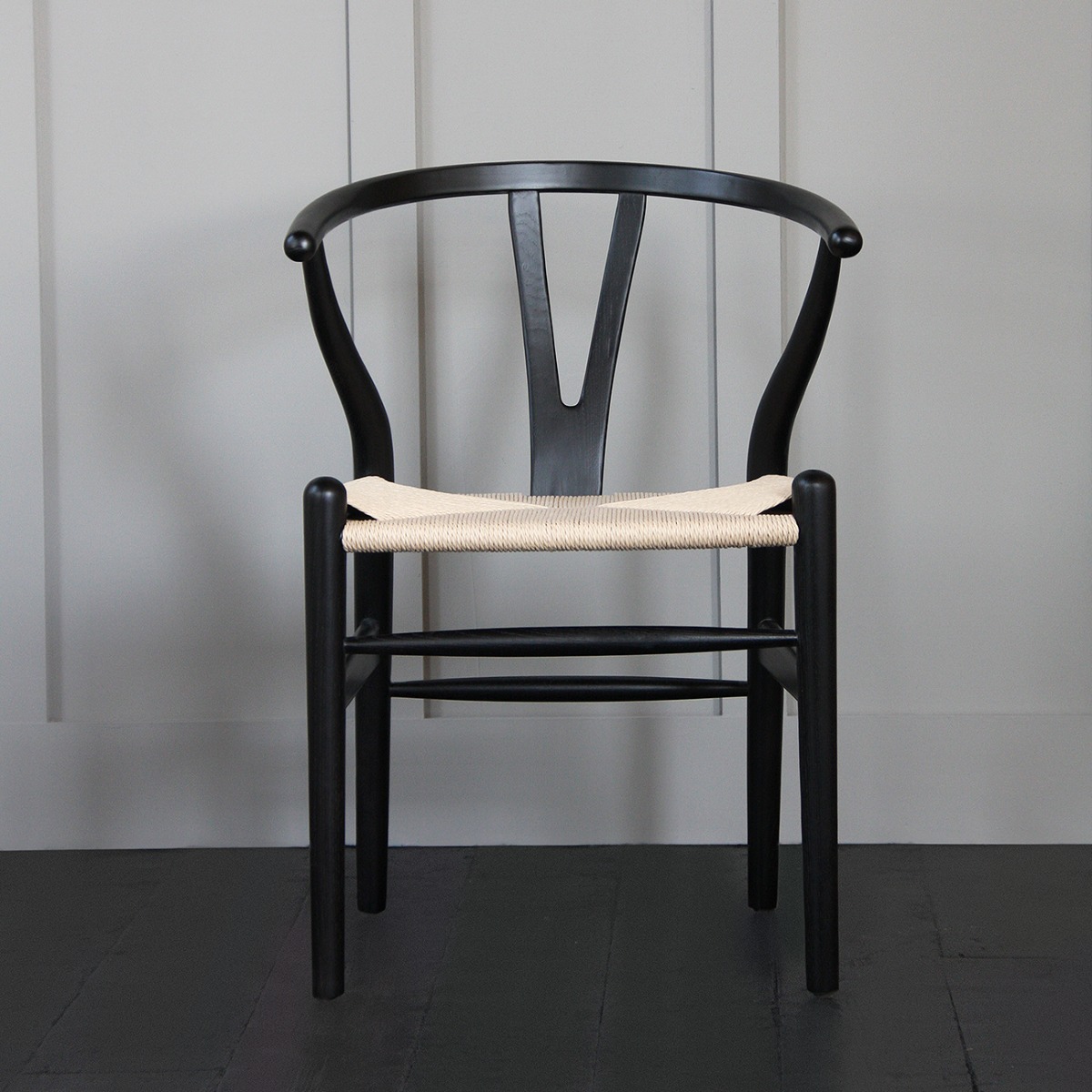
Commissioned by Carl Hansen & Son to create a high-quality chair with scope for mass production, Hans got to work in pursuit of his most famous piece of furniture.
Four prototypes were initially presented to Hansen – the CH22, CH23, CH24 and CH25. All four designs originally went into production, but the Wishbone went on to sell by far the most and remained in such high demand for almost three-quarters of a century (and counting).
That classic combination of a solid wooden frame and a paper coil seat is synonymous with Hans Wegner’s style. The success of the paper coil seat was a bit of a happy accident. The original seat was intended to be spun from sisal, but this was in scarce supply due to the lingering effects of the war. As a result, paper coil was used as an alternative (this was a shrewd Swedish invention during wartime), and it was in keeping with Hans’ philosophy of simplicity. It indeed turned out to be a great choice.
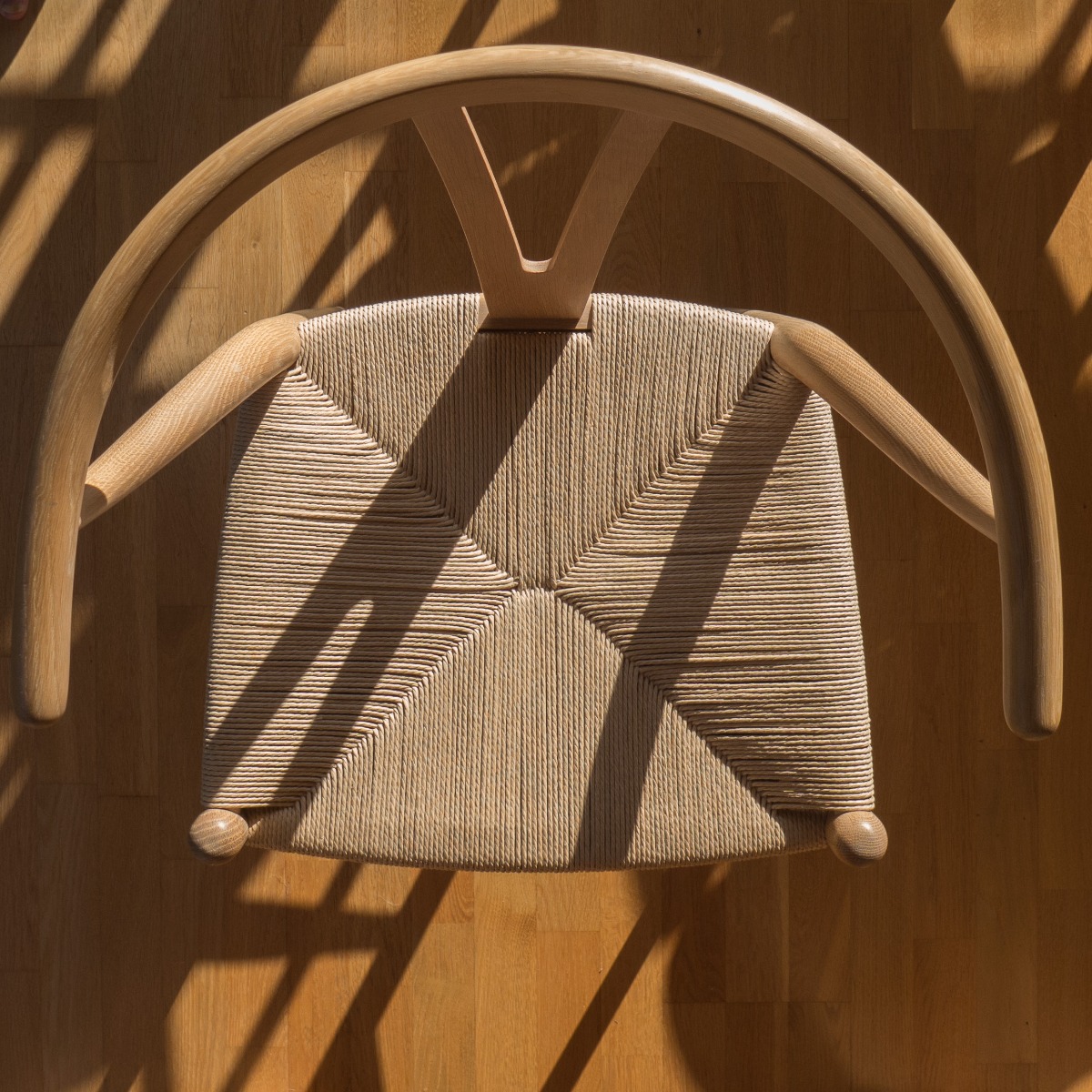
Credit – danishdesignreview.com
One fun fact is that Carl Hansen initially disliked Hans’s design for the Wishbone - he complained that the manufacturing process was far too complicated and even said that the chair looked like garden furniture! Needless to say, the public voted with their wallets, and the rest is history.
There’s little wonder why the Wishbone Chair is our best-seller on the WSG website – we stock multiple varieties of this timeless icon, from oak wood to light ash, alternative inky editions and a plethora of coloured paper coil seats.
Of course, we also offer all of your favourite designs in bar stool format, so your kitchen island/counter or home bar won’t miss out on the Scandi party!
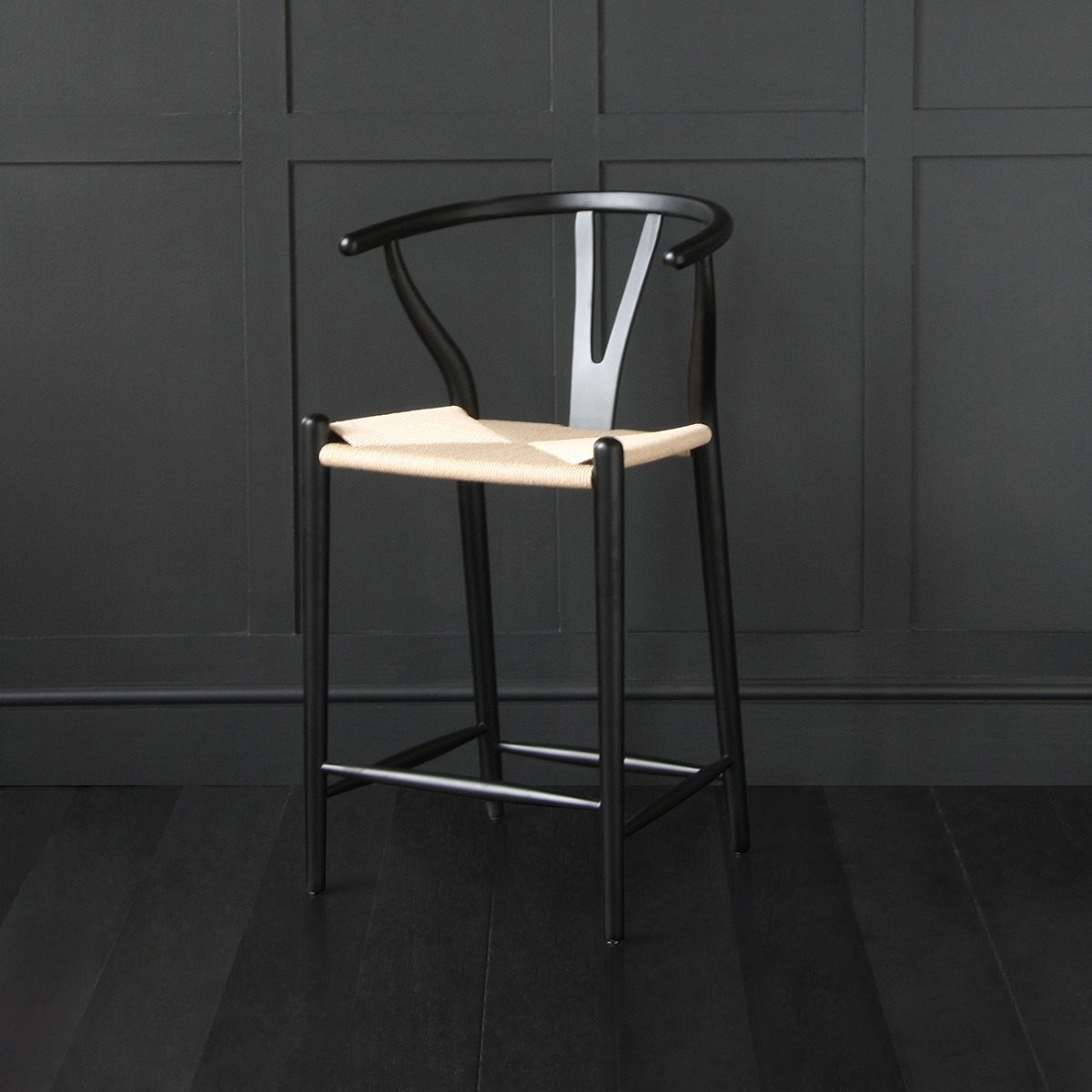
Both the Wishbone and Round Chair's success helped Hans win the prestigious, inaugural Lunning Prize in 1951 along with Finnish designer Tapio Wirkkala, an award that celebrated Scandinavian designers.
Later Years
By the 1960s, Hans had changed suppliers and began using the workshop of PP Mobler (a family-owned Danish joinery workshop, est. 1953) to create new designs and prototypes.
Like many greats in their own creative fields, Hans’ style evolved somewhat over time, shifting away from the former ‘Danish modern’ approach and more into a functionalist side of things.
The Shell Chair (CH07) was an example of Hans’ new approach to design. It boasted a radical, initially unpopular aesthetic due to its edgy looks but one which found much more appeal once re-released in the 1990s.
He continued to innovate and try out new approaches to his work. He enjoyed a resurgence in demand for his earlier designs by the 1990s as the Danish modern and mid-century modern movement was back in vogue once again.
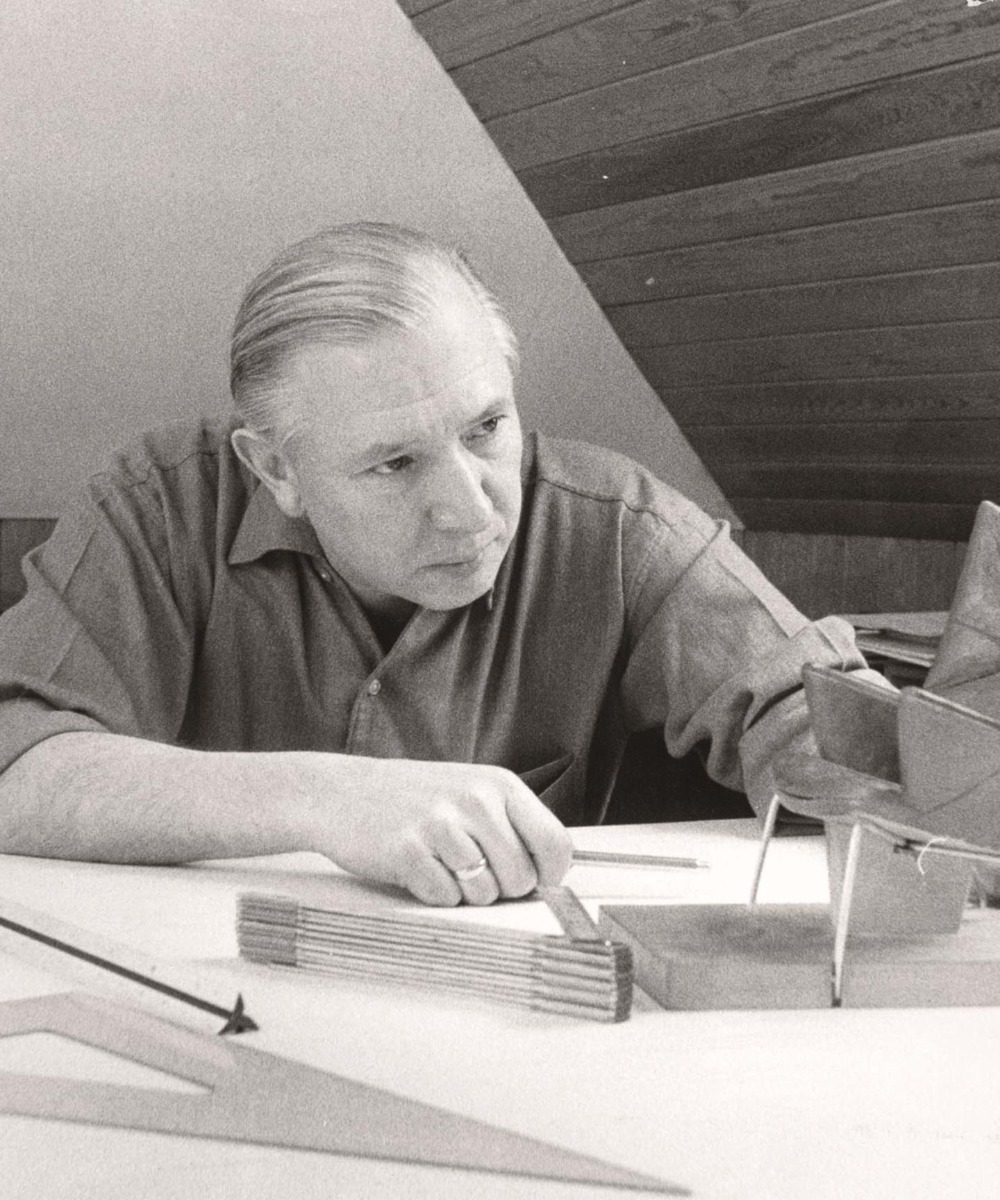
Credit – carlhansen.com
Hans retired in 1993, but his daughter Marianna took over the studio to continue his outstanding work and family legacy. Sadly, he passed away in 2007, but the success of his work and the mass celebration of his contribution to the world of furniture design lives on.
Hans’ almost exclusive use of wood, distinctive use of paper coil and traditional construction methods were all hallmarks of his unique style. He remained committed to the pursuit of excellence throughout his career, stating, “I have always wanted to make unexceptional things of an exceptionally high quality”.
His characteristic use of traditional joinery techniques for his chairs was another quirk, synonymous with his distinctive way of doing things.
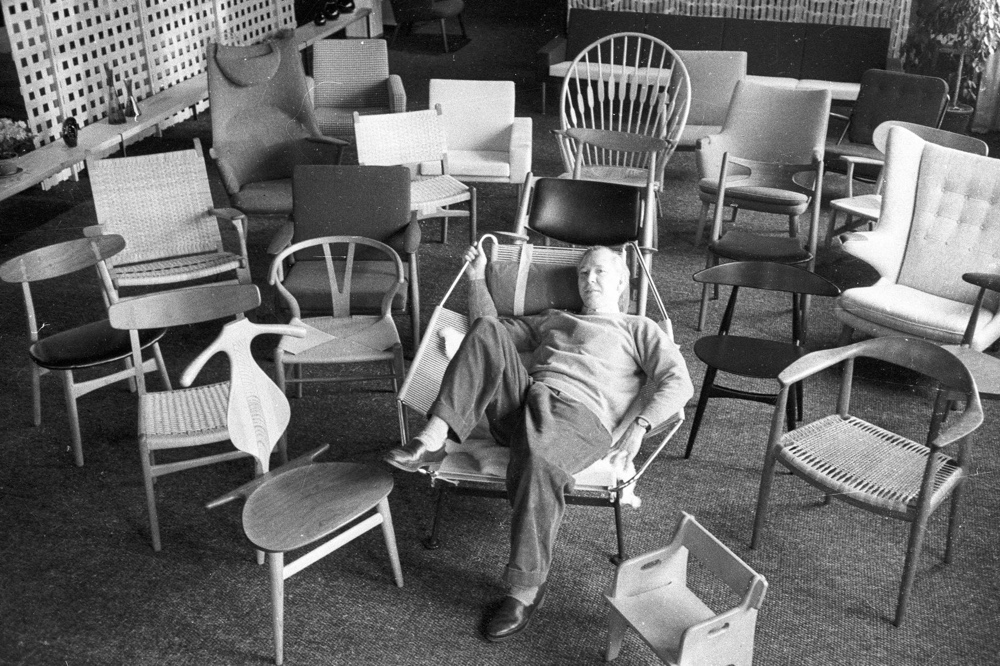
Credit – decoist.com
Ultimately, Hans Wegner’s legacy has had a profound impact on interior design, furniture making and done wonders to highlight the appeal of Scandinavian furniture in general.
Along with Finn Juhl and Arne Jacobsen, he has rightly gone down in history as one of the great masters of Scandi design. His Wishbone Chairs, in particular, will go on to be ever-popular products for future generations.
His insistence on chairs being comfortable to use, not just being pretty to look at, marked him out as someone in tune with what the everyday consumer wants to have in the home.
Don’t forget to check out the full Wishbone range on our website – which design do you love the most? We’re also mega fans of Hans’ PP68 Armchair, just as iconic a design that you can pick up from us as well!
We hope you’ve enjoyed our little biographical blog post this week, and have learned something new about this great Dane!
To Hans, and his contribution to design, we say – Tusind tak! (Danish for ‘thank you’…).
Feel the Love!

